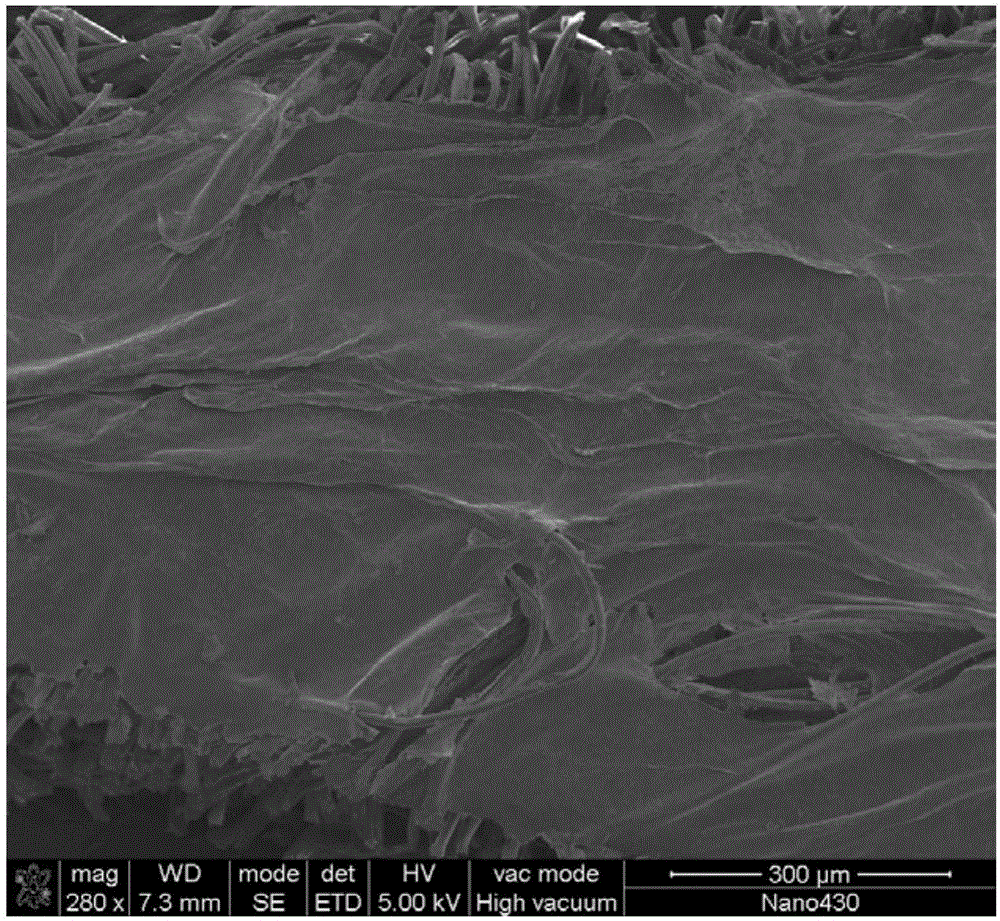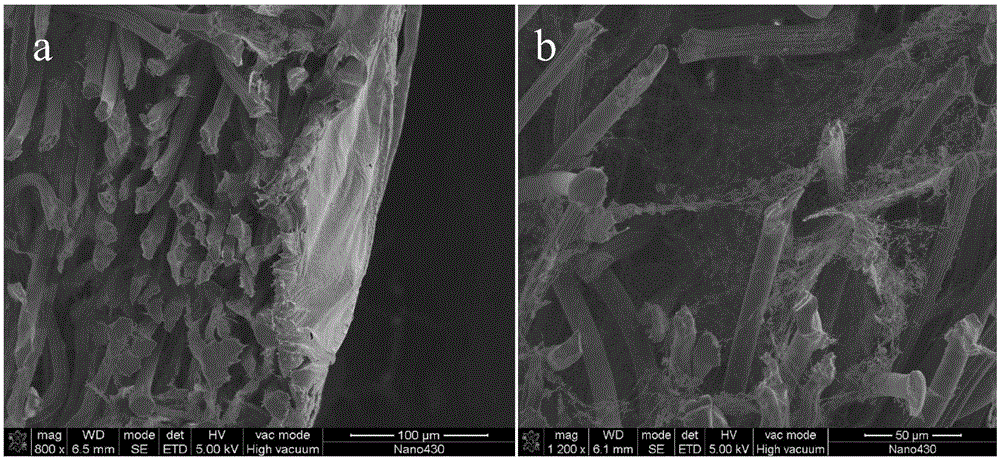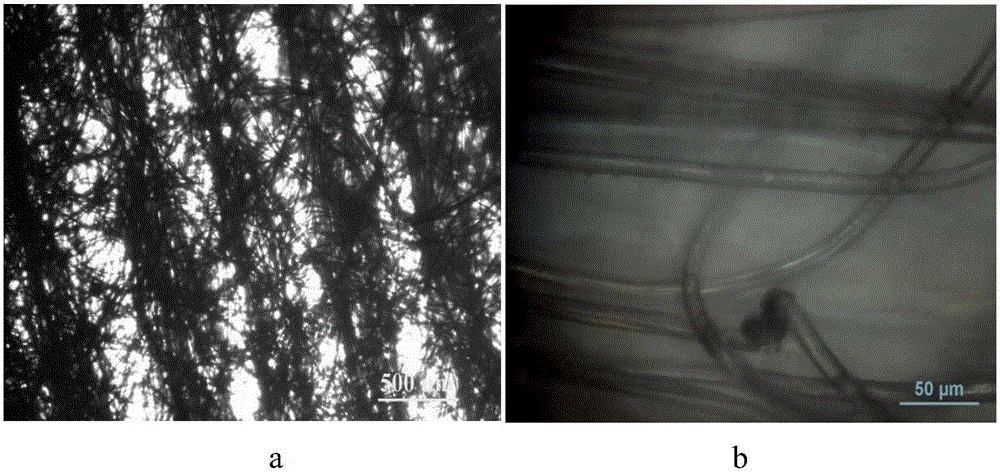A kind of bacterial cellulose/fabric layered composite material and preparation method thereof
A technology of bacterial cellulose and composite materials, applied in the direction of fiber type, fiber treatment, physical treatment, etc., can solve the problems of easy adhesion, difficult to fit, restricted use, etc., to improve easy adhesion, easy operation, and improved The effect of affinity
- Summary
- Abstract
- Description
- Claims
- Application Information
AI Technical Summary
Problems solved by technology
Method used
Image
Examples
Embodiment 1
[0034] (1) For strain amplification, take a ring of Acetobacter xylinum and insert it into the liquid medium, place it in a low-temperature shaker at 150 rpm and 30°C until flocs are produced in the medium;
[0035] (2) The polypropylene fabric is cut into a circle with a diameter of 15cm, and then the output power is 300W, and the reaction chamber pressure is 1.0×10 2 Under the condition of Pa, it was treated with low temperature oxygen plasma for 7min. Take out the fabric and place it in the container, sterilize it under high temperature at 0.1MPa at 121°C, and then transfer it to an oven at 60°C for drying;
[0036] (3) Take 10 mL of the above-mentioned culture medium and place it in a petri dish with a diameter of 15 cm, spread the treated polypropylene fabric on the bacterial solution, then add 5 mL of the culture medium to the fabric, and place it in a biochemical culture dish at 25°C. box until a layered composite material is formed, the polypropylene fabric has a pore...
Embodiment 2
[0042] (1) For strain amplification, take a ring of Acetobacter xylinum and insert it into the liquid medium, place it in a low-temperature shaker at 170rpm and 30°C until flocs are produced in the medium;
[0043] (2) Cut the jute fabric into a square with a side length of 10 cm, and then process the fabric with gas-phase ultraviolet light grafting technology. Take out the fabric and place it in a container, sterilize it with ethylene oxide and transfer it to an oven at 60°C for drying;
[0044] (3) Take 16mL of the above-mentioned culture medium and place it in a petri dish, spread the treated jute fabric on the bacterial solution, then add 4mL of the culture medium to the fabric, and place it in a biochemical incubator at 26°C until it forms Layered composite material, the jute fabric has a pore size of 40 microns, a porosity of 60%, a thickness of 0.1 mm, and a weight per unit area of 110 g / m 2 ;
[0045] (4) Soak the above-mentioned composite material in deionized wat...
Embodiment 3
[0050] (1) Add 5g of glutathione to the prepared liquid medium under aseptic conditions;
[0051] (2) For strain amplification, take a ring of Acetobacter xylinum and insert it into the above-mentioned liquid medium, place it in a low-temperature shaker at 200 rpm and 25°C until flocs are produced in the medium;
[0052] (3) Cut the nylon fabric into a rectangle with a width of 10 cm and a width of 8 cm, and then treat the surface with an 80° C. high-temperature aqueous solution of potassium hydroxide for 12 hours, and finally treat it with deionized water to neutrality. Take out the fabric and place it in a container, sterilize it with absolute ethanol and transfer it to an oven at 60°C for drying;
[0053] (4) Take 20mL of the above culture medium and place it in a petri dish, spread the treated nylon fabric on the bacterial solution, then add 5mL of the culture medium to the fabric, and place it in a biochemical incubator at 28°C until it forms Layered composite material, ...
PUM
| Property | Measurement | Unit |
|---|---|---|
| pore size | aaaaa | aaaaa |
| thickness | aaaaa | aaaaa |
| pore size | aaaaa | aaaaa |
Abstract
Description
Claims
Application Information
 Login to View More
Login to View More - R&D
- Intellectual Property
- Life Sciences
- Materials
- Tech Scout
- Unparalleled Data Quality
- Higher Quality Content
- 60% Fewer Hallucinations
Browse by: Latest US Patents, China's latest patents, Technical Efficacy Thesaurus, Application Domain, Technology Topic, Popular Technical Reports.
© 2025 PatSnap. All rights reserved.Legal|Privacy policy|Modern Slavery Act Transparency Statement|Sitemap|About US| Contact US: help@patsnap.com



